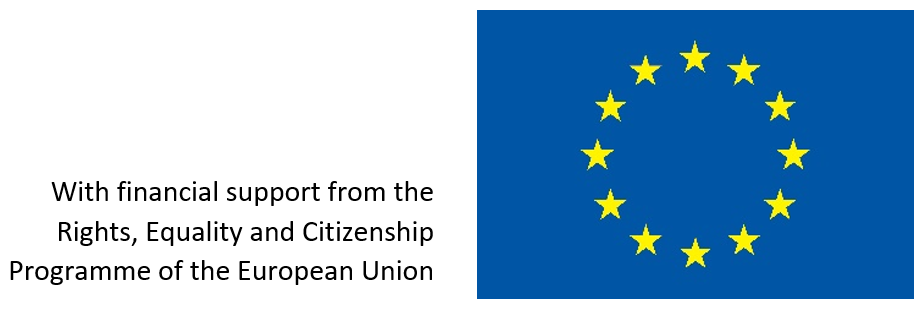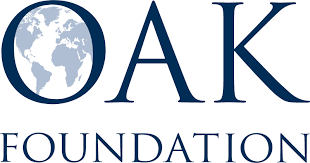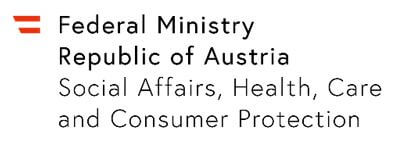The vulnerable situation of trafficked women and girls seeking asylum is widely recognized. Consequently, women and girls affected by trafficking are entitled to special procedural guarantees(2) and special reception conditions(3) during their asylum proceedings. In order to guarantee those rights, EU Member States have a positive human rights obligation to identify potentially trafficked women and girls among asylum seekers in a timely and effective manner.
Despite the decreasing number of asylum applications since 2016 in Austria, the number of female applicants for international protection(4) has increased. In 2015, the share of female asylum applicants was 28%, whereas for the time period January-August 2017 it increased to 39%.(5)
There are various ways in which asylum-seeking women and girls may be trafficked. The woman or girl may seek employment in order to pay back debt or to finance the journey onward and may find herself trapped in trafficking situations. This can happen either en route or at the final destination.(6) The person may also find work opportunities with the smugglers who then become the perpetrators of trafficking.(7) Smuggling and trafficking networks often overlap.(8) Another scenario is that the woman or girl has submitted an application for international protection and subsequently finds herself in a trafficking situation.(9) Certainly, there are cases of persons who first get into trafficking situations and afterwards look for international protection. The trafficked person is told by the traffickers to apply for asylum in order to avoid deportation for the time of the asylum procedure.(10) In the second scenario, the person applies for asylum after escaping from the traffickers, in order to avoid being sent back to the country of origin where the person may be subjected to re-trafficking or reprisal.(11) There are different purposes of trafficking in human beings, such as sexual exploitation, labour exploitation, organ removal, begging, or criminal activities.
The legal framework
The positive obligations of states to protect persons affected by trafficking are laid down in specific legal instruments for anti-trafficking. The primary legal instruments at the European level are the Convention on Action against Trafficking in Human Beings (2005) by the Council of Europe and the Trafficking Directive (2011) by the European Parliament and the Council of the European Union. Both instruments require states to provide victims with immediate access to legal representation, legal counsel and access to witness protection programs, based on individual risk assessments.(12)
The legal framework on international protection contains specific provisions for ‘vulnerable persons’(13) which are, inter alia, set out in the Reception Condition Directive of the EU.(14) This definition of vulnerable persons includes persons affected by trafficking as well. Accordingly, Member States have the obligation to assess, identify and address the special needs of those vulnerable persons in a timely manner.(15) Furthermore, victims of violence shall be provided with access to appropriate medical and psychological treatment or care.(16) The identification of trafficked women and girls who are seeking asylum is a prerequisite for their access to support services because they are often not aware of their rights.
Apart from the special needs that trafficked persons have, there is another reason why the formal identification as a ‘victim of trafficking’ is of great relevance for the individual. In theory, some trafficked persons may qualify for refugee status or subsidiary protection status on grounds related to their trafficking experience. This would be the case, for example, if the woman or girl may be subject to repercussions by the perpetrators upon return, which would amount to persecution for a reason mentioned in the 1951 Refugee Convention against which no effective protection by national authorities in the country of return is available. One of the reasons can be the membership to a particular social group.(17) However, in practice, only very few persons have received international protection on grounds related to their status as victims of trafficking. On the one hand, officials working in asylum determination procedures are sometimes not sufficiently trained to identify potential cases of trafficking as shown by studies among EU Member States.(18) Moreover, some officials are uncertain whether rights violations related to human trafficking may qualify for international protection.(19) On the other hand, applicants for international protection on the grounds of trafficking face difficulties in enforcing their claims. In general, claims are often rejected with the reasoning that individual persecution(20) is lacking, or the person is not found to be a member of a particular social group according to the 1951 Refugee Convention. Furthermore, it is justified that in case of persecution the applicants have access to protection by national authorities in the country of origin or return.(21) However, it has been recognised that serious human rights violations inherent to trafficking such as abduction, incarceration, rape, sexual enslavement, enforced prostitution, forced labour, removal of organs, physical beatings, starvation, and the deprivation of medical treatment may amount to persecution.(22) The GRETA report of 2016 states that “Risks faced on return to a country of origin, or a third country (of transit, for example), including risks of re-trafficking, are also recognised as potentially giving rise to a claim to asylum.”(23) Furthermore, the trafficked person may face “ostracism, discrimination or punishment by the family, the local community or, in some instances, by the authorities upon return.”(24) When it comes to minors, child trafficking is recognised by UNHCR as a form of persecution.(25) This does not imply that all trafficked persons qualify for international protection but some trafficked persons are at risk of serious harm after return according to the 1951 Refugee Convention and thus, require a case-by-case assessment.
The situation in Austria
In Austria, there is no statistical data available on the number of asylum applications or decisions that are linked to human trafficking.(26) However, when taking into account the estimates and experiences of relevant actors and studies in other EU Member States, it can be assumed that the number of trafficked persons among asylum seekers in Austria is of quantitative relevance.(27)
A review of Austrian case law conducted by IOM and EMN in 2014(28) identified for the time period of July 2008 – December 2013 a total number of 129 decisions of the Asylum Court(29) that were explicitly linked to trafficking as a ground for granting international protection. Only in seven cases asylum was granted, and in three cases, the applicants were granted subsidiary protection. Out of the seven cases that received refugee status, the Court concluded in five cases that the applicants fall under the definition of membership of a particular social group (due to their trafficking experience) according to the 1951 Refugee Convention. In the case of an Albanian woman, the Court held that the applicant, who had testified against the traffickers, may face assault upon return and viewed the Albanian authorities as not being able to protect her. The majority of applications were submitted by persons from Nigeria (41 cases). The Asylum Court has repeatedly justified that the Nigerian authorities are able and willing to protect returnees from traffickers. Only one case of an applicant from Nigeria was granted refugee status during this time period.(30)
According to IOM and EMN, the Austrian asylum system has been criticised for the lack of an effective mechanism for the identification of ‘vulnerable persons’ among asylum seekers, apart from the identification of unaccompanied minors. Moreover, there is no centralised formal identification of persons affected by trafficking as such, that is “defined as a decision by a competent authority which is binding for other authorities.”(31) However, if an authority has the suspicion that an asylum seeker may be affected by trafficking, a special unit of the federal criminal police office is contacted. If the suspicion is confirmed by the specialised unit, criminal investigations are initiated and the presumed trafficked person has access to support services provided by a specialised NGO.(32) Hence, this identification is relevant only in regards to criminal proceedings but is not binding for authorities such as the asylum authorities.(33)
In Austria the main actors providing support services for women and girls affected by trafficking are the specialised NGO Intervention Centre for Trafficked Women (LEFÖ-IBF) and the Drehscheibe, a facility of the youth welfare office of the City of Vienna.(34) LEFÖ-IBF is the only NGO that is tasked by the Federal Ministry of the Interior and the Federal Ministry of Health and Women’s Affairs to provide support to women affected by trafficking in Austria.(35) It offers psychosocial counselling, legal support during court proceedings, an emergency shelter and return assistance to migrant woman and girls.(36) All migrant women and girls having (potentially) experienced trafficking have free access to services provided by LEFÖ-IBF and this is not bound to any formal identification by public authorities.
The youth welfare office, which is operated on a federal state level, is responsible for providing assistance to minors affected by trafficking. In Vienna, the Drehscheibe, a socio-pedagogic centre, is specialised in assisting unaccompanied foreign minors and minors affected by trafficking. It provides accommodation, food and cooperates with LEFÖ-IBF, which provides legal assistance. The other federal states do not have specialised centres for trafficked minors but the general youth welfare centres take care of such cases.(37) LEFÖ-IBF and the Drehscheibe are both located in Vienna. A gap in protection and support of trafficked persons in the other federal states of Austria has been reported.(38)
LEFÖ-IBF plays an important role in the anti-trafficking landscape in Austria. It has contributed to the improvement of the identification of trafficked women and girls through the training of law enforcement actors, asylum officials, judges, as well as its active membership in the Task Force on Combating Human Trafficking.(39) Good cooperation has been established between LEFÖ-IBF and other actors such as law enforcement and municipal authorities in Vienna, and in some cases with the offices of public prosecutors. However, it is important to note that this cooperation cannot replace a formal identification mechanism within the Austrian asylum system.(40)
By Jimy Perumadan and Almut Bachinger(1)
Jimy Perumadan is currently working at the International Centre for Migration Policy Development’s (ICMPD) research unit on anti-trafficking policies. She can be contacted at: jimy.perumadan@icmpd.org
Almut Bachinger is a researcher at ICMPD, focussin on migration, gender, youth and intersectionality, work and the labour market. She has been involved in two research projets on human trafficking so far.
Sources
(1) Proofread by Christine Donovan Ball.
(2)Procedural guarantees ensure certain rights during legal procedures. A special procedural guarantee is, for example, the right to legal support during the asylum procedure, the right to be interviewed by an official of the same sex, etc.
(3) Asylum seekers waiting for the decision on their asylum application have the right to certain reception conditions, such as access to housing, food, clothing, health care, education for minors and access to the labour market under certain conditions. Some asylum-seekers have special reception needs such as psychological treatment. See https://ec.europa.eu/home-affairs/what-we-do/policies/asylum/reception-conditions_en [accessed on 17.09.2017]
(4)International protection refers to asylum (= refugee status) and subsidiary protection.
(5)Federal Ministry of the Interior: Asylstatistik 2015 and 2017. Online available at: http://www.bmi.gv.at/301/Statistiken/ [accessed on 19.09.2017]
(6)Anna Triandafyllidou and Thanos Maroukis (2012): Migrant Smuggling: Irregular migration from Asia and Africa to Europe. Palgrave Macmillan, p. 191-192.
(7)ibid.
(8)International Organization for Migration (IOM) and European Migration Network (EMN, 2014): Trafficked persons as asylum seekers: The process of identification and access to residence rights in Austria, p. 33. Online available at: http://www.emn.at/wp-content/uploads/2017/01/Trafficked-persons-as-asylum-seekers_Austria_Final.pdf [accessed on 17.09.2017]
(9)It is important to note that in general international protection is granted for situations experienced in the country of origin (IOM and EMN 2014:33).
(10)Ibid. IOM and EMN (2014: 33).
(11)Ibid. IOM and EMN (2014: 33).
(12)Matilde Ventrella (2017): Identifying Victims of Human Trafficking at Hotspots by Focusing on
People Smuggled to Europe. Social Inclusion 5 (2): 69–80.
(13)Persons are not vulnerable as such, but can be in vulnerable situations.
(14)Directive 2013/33/EU of the European Parliament and of the Council of 26 June 2013 laying down standards for the reception of applicants for international protection. Online available at: http://data.europa.eu/eli/dir/2013/33/oj [accessed on 17.09.2017].
(15)Art 21 and Art 22 Reception Condition Directive, Directive 2013/33/EU.
(16)Art 25 Reception Condition Directive, Directive 2013/33/EU.
(17)Membership of a particular social group is one of the five grounds for persecution according to the 1951 Refugee Convention. It is a group of persons who share a common characteristic other than their risk of being persecuted. For example, women, tribes, occupational groups and homosexuals are widely recognized as members of a particular social group.
(18)In Austria, the need for training of officials within the asylum authorities in the identification of persons affected by trafficking has been recognised and is being addressed (IOM and EMN (2014: 24); IOM projects “IBEMA” and “ASYL-Train” see more at http://www.iomvienna.at/de/asyl-train ).
(19)ICAT, Inter-Agency Coordination Group against Trafficking in Persons (2016): Issue Paper: Providing Effective Remedies for Victims of Trafficking in Persons. UNODC. Online available at: http://www.unhcr.org/publications/legal/443b626b2/guidelines-international-protection-7-application-article-1a2-1951-convention.html [accessed on 17.09.2017].
(20) Individual persecution in the country of origin/ return is an essential element of the definition of a refugee and thus, is a prerequisite for being granted refugee status.
(21) ICAT (2016).
(22) ibid.
(23)GRETA, Group of Experts on Action against Trafficking in Human Beings (2016): 5th General report on GRETA’S activities. Council of Europe, p. 40. Online available at: https://rm.coe.int/168063093c [accessed on 17.09.2017].
(24)IOM and EMN (2014: 35).
(25) Jason M. Pobjoy (2017): The Child in International Refugee Law. Cambridge University Press. Cambridge, p. 25.
(26)GRETA (2016: 41). The statistics of the Federal Ministry of the Interior publishes the number of decisions on humanitarian residence (§57 AsylG 2005), which is granted, inter alia, to trafficked persons. However, there is no specific statistic available on asylum (§3 AsylG 2005) nor on subsidiary protection (§8 AsylG 2005) specifically granted on grounds related to trafficking.
(27)IOM and EMN (2014: 20).
(28)IOM and EMN (2014: 37- 41).
(29)The Asylum Court was responsible for appeals against decisions of the body of first instance, the Federal Asylum Office. Due to a reform of the Austrian system of administrative jurisdiction in January 2014 the Federal Administrative Court is responsible for appeals against the first instance decisions.
(30)IOM and EMN (2014: 40).
(31)IOM and EMN (2014: 28).
(32)AIDA (Asylum Information Database, 2016): Country Report: Austria. European Council of Refugees and Exiles, p. 50. Online available at: http://www.asylumineurope.org/sites/default/files/report-download/aida_at_2016update.pdf [accessed on 17.09.2017].
(33)IOM and EMN (2014: 28).
(34)Besides these facilities there are some other NGO’s active in the field of anti-trafficking such as Caritas, Diakonie, ECPAT, EXIT, Herzwerk and SOLWODI (GRETA Report 2016: 10).
(35)LEFÖ-IBF (2017: 5): Tätigkeitsbericht 2016. Online available at: http://www.lefoe.at/tl_files/lefoe/IBF_Tätigkeitsbericht_2016.pdf [accessed on 19.09.2017]
(36)http://www.lefoe.at/index.php/IBF.html#Offering [assessed on 18.09.2017]
(37)GRETA (2015): Report concerning the implementation of the Council of Europe Convention on Action against Trafficking in Human Beings by Austria. Second Evaluation Round, p. 29. Online available at: https://rm.coe.int/1680630cb4 [accessed on 20.09.2017]
(38)IOM and EMN (2014: 32).
(39)The Task Force on Combating Human Trafficking is a co-ordination platform with the aim to coordinate and intensify anti-trafficking measures in Austria. It brings together all relevant ministries, government bodies, the federal provinces, the social partners and specialized NGOs.
(40)GRETA (2015: 25).






